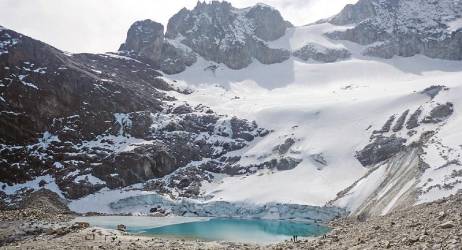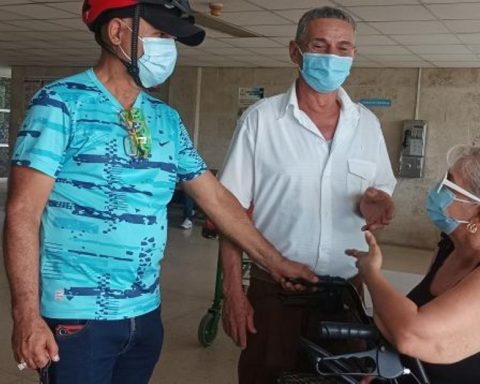The glaciers of the Andes mountain range have lost 42% of their surface in the last 30 years, shrinking from 2,429 square kilometers in 1990 to 1,409 square kilometers in 2020, according to a study released this Friday by the Brazilian environmental initiative MapBiomas.
Glaciers in the tropical region of the Andes have shrunk by almost half in three decades, both in size and volume, as a result of climate change and other factors such as the growing fires in the Amazon, according to MapBiomas, an initiative that maps changes in land use in South America from the analysis of satellite images and other technological tools.
“This unprecedented growth in the loss of glaciers can be attributed to climatic changes and non-climatic factors such as the increase in forest fires in recent years in the Amazon, which generate black carbon, an element that can accelerate the retreat of snows,” according to the study.
MapBiomas is a Brazilian multidisciplinary initiative in which several non-governmental organizations, universities and technology companies participate and is dedicated to mapping land cover and land use changes in South America, mainly in Brazil and the Amazon.
Specialists from Mapbiomas, the La Molina National Agrarian University (Peru), the Glacier and Mountain Ecosystem Research Institute (Peru) and the National Space Research Institute (Peru) participated in the study on the snow situation in the South American mountain range. INPE, Brazil).
The results were highlighted in an article published in the latest edition of the scientific journal Remote Sensing.
“Glaciers in the tropical Andes are undergoing rapid shrinkage, with potential environmental, cultural and economic impacts for local populations,” the article states.
According to Efrain Turpo, one of the authors of the study, in addition to the climatic changes generated by the greenhouse effect and that are accelerating global warming, the speed of loss of glaciers in South America is a direct consequence of the black carbon released by forest fires in The Amazon.
Turpo added that the reduction in snowfall affects the integrity of ecosystems that depend on the water cycle, agriculture, water supply, electricity generation and even tourism.
For María Olga Borja, another of the co-authors, it is shown that the reduction of polluting gases released by forest fires has become urgent for South America.
“It is urgent that national governments adopt decisive measures to combat the climate crisis, including climate change mitigation policies and programs, mainly in basins with glaciers, to reduce the impacts of their melting,” he warned.
According to the study, the rate of loss of glaciers in the tropical region of Los Andes, that is, those located between the Tropics of Cancer and Capricorn, is 28.4 kilometers per year, and the most affected are those that They are less than 5,000 meters above sea level, and in 30 years they have lost 80.25% of their area.
By country, the most affected proportionally were those with the fewest glaciers.
You can also read: In the Vesty Pakos Biopark, 70% of the animals are old; 230 died since 2021
Peru, Bolivia and Ecuador are the countries with the largest areas of tropical glaciers, with 72.76%, 20.35% and 3.89% of the total, respectively. The percentages of glacier loss in these countries were 41.19% for Peru, 42.61% for Bolivia and 36.37% for Ecuador.
The countries that follow with the highest percentage of glaciers in the tropical region of the Andes are Colombia, with 2.18% of the total, Chile (0.78%), Argentina (0.04%) and Venezuela (0.01 %). But the glacier losses in percentages were 96.9% for Venezuela, 60.2% for Colombia, 47.24% for Chile and 45.47% for Argentina.
According to the study, in addition to the environmental and economic impacts, this melting also causes loss of cultural property, since the snow-capped mountains are of special value to local populations.
“The populations of the Andean countries still live today a unique symbiosis between the telluric, the emotional and the natural, so that their snowy mountains are part of their vision of the world and surround myths, legends, and ancestral social and cultural practices that survive until today”, explained sociologist Raúl Borja Núñez, also author of the study.


















